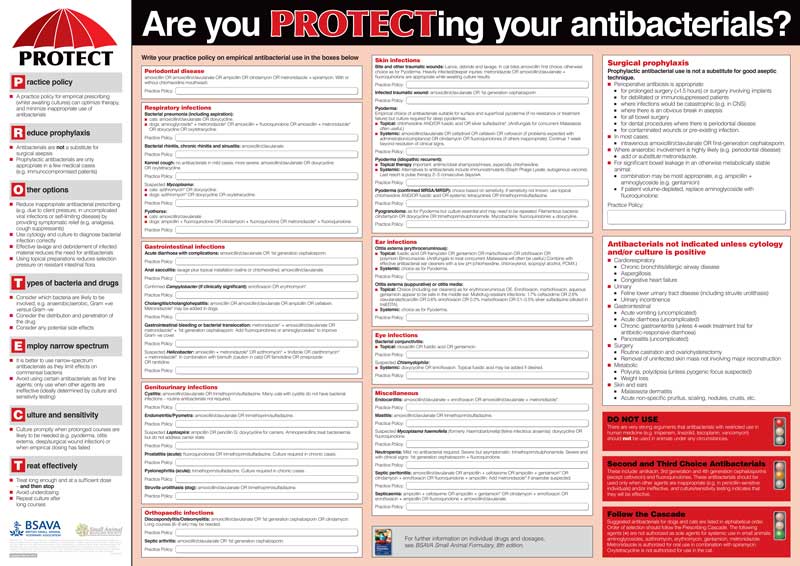12 Jul 2021
Nicola Lakeman looks at the benefits that an RVN’s involvement in ear cases can bring.

Image © Eva / Adobe Stock

Responsible use of antimicrobials has been widely discussed in all forms of the veterinary media.
Veterinary bodies and representative associations have all shown support towards reducing the overall amount of antimicrobials that are prescribed and used within the veterinary field (Ungemach et al, 2006).
Actively reducing the usage of antimicrobials in veterinary practice has been suggested, with the encouragement of laboratory analysis of samples for culture and selectivity prior to antimicrobial prescription, alongside education of prescribers on the importance of antimicrobial resistance (Hardefeldt et al, 2018).
These bacteriology results can, however, take time and have a financial implication, although many reference laboratories have reduced the cost for these tests. Pressures (expectations) from pet owners on veterinary surgeons for results, and sometimes for the actual medications, can be difficult.
Veterinary practices may stock a number of different ear preparations and cleaners based on first-line and second-line preferences, which may be set out by a practice protocol or in guidelines – or set by a clinical board in corporate groups.
However, in most practices, including corporates, this is in line with the BSAVA PROTECT recommendations, which set out recommendations for antimicrobial use in specific circumstances based on cytology (BSAVA, 2014; Figure 1).

Cytology is important in the evaluation of otitis externa – it allows targeting of therapeutics and permits accurate monitoring of response to these medications (Angus, 2004). Samples for cytology can be obtained either via a swab or gloved finger; the material is then rolled on to the microscope slide. Diff-Quik is an ideal stain for microscopic examination (Angus, 2004; Forsythe, 2016).
Samples should be viewed under the ×400 dry field and then ×1,000 oil immersion lens of the light microscope. A semi-quantitative system of assessing yeasts and bacteria number in the sample can be instigated. Recommendations by Ginel et al (2002) are made that samples with greater than five yeasts per high power dry field (HPDF; ×400 magnification) and greater than 25 bacteria per HPDF (greater than 12/HPDF for yeast and greater than 15/HPDF for bacteria in cats) are considered significant.
A simple protocol would require all patients being presented for ear issues to have a discussion with the veterinary surgeon about the importance of having a cytology sample taken prior to antimicrobial choice.
If consent is gained from the owner, the sample is taken, placed on to a microscope slide, stained and examined by the veterinary nurse. Identification of whether bacteria (cocci or rods), yeasts or neutrophils are present follows. A semi‑quantitative count can be made and recorded with findings on the clinical history. The veterinary surgeon can then make an informed decision on which antimicrobial to use, or not, and whether further culture and sensitivity is required.
Indications when culture and selectivity should be performed include:
Even though a cost exists for performing the cytology in house, the owner has a potential to save money by the correct antibiotics being used first line.
Assigning RVNs in the practice can be of great use in the instigation of this protocol, and can help in staff retention and help promote the use of RVNs in dermatology clinics. The role of RVNs in dermatology clinics can be wide ranging and not limited to:
The BSAVA poster does help to prevent errors and increase “best practice” by guiding the veterinary team to the indicated antimicrobial for the specific clinical indication. Identification of any microorganisms will ensure that the most indicated medication would then be prescribed and dispensed. Using the best indicated topical antimicrobial would potentially help reduce the potential for antimicrobial resistance.
The World Health Organization (WHO) produced a list of critically important antibiotics (CIAs), with strong guidance being given on their use (WHO, 2016). Of the topical ear preparations that most practices keep as first‑line medications (Table 1), only one is not classed as critically important.
| Table 1. List of ear preparations commonly kept in stock and their World Health Organization (WHO) ranking for critically important antibiotics (CIAs) | ||
|---|---|---|
| Trade name (manufacturer) | Active ingredients (antibiotic apprised in bold) | WHO ranking |
| Aurizon (Vetoquinol) | Clotrimazole, dexamethasone, marbofloxacin | Quinolones = highest priority CIA |
| Canaural (Dechra) | Diethanolamine fusidate, framycetin sulfate, nystatin, prednisolone | Aminoglycoside = highest priority CIA |
| Easotic (Virbac) | Hydrocortisone aceponate, gentamicin sulfate, miconazole nitrate | Aminoglycoside = highest priority CIA |
| Neptra (Elanco) | Florfenicol, terbinafine hydrochloride, mometasone furoate | Amphenicols = not a CIA, highly important |
| Otomax (MSD) | Betamethasone valerate, clotrimazole, gentamicin sulfate | Aminoglycoside = highest priority CIA |
| Osurnia (Dechra) | Betamethasone acetate, florfenicol, terbinafine | Amphenicols = not a CIA, highly important |
| Surolan (Elanco) | Miconazole nitrate, polymyxin B, prednisolone | Polymyxins = highest priority CIA |
WHO guidance states that culture and selectivity should be performed prior to any required use of CIAs. This protocol would achieve better choice of topical antimicrobial, helping to adhere to the WHO guidance on CIAs.
It is a common comment from veterinary professionals that client expectations can sometimes be too high. Owners can expect results; we all do for the health and well-being of our pets. Communication with clients is very important; setting expectations from the outset is really important.
Using RVNs to undertake ear cytology will help with these expectations. Discussing costs of courses of antibiotics that potentially might not be the correct ones to use, compared to using an ear cleaner to help with the balance of commensal bacteria and/or yeasts, can be useful.
Assigning RVNs in these cases can really help to reduce the usage of antibiotics overall. Performing cytology prior to dispensing an ear preparation can help to determine whether an ear cleaner is required, or whether it is a bacterial or yeast imbalance/infection.
RVNs can be used to take the swabs, perform the cytology, and discuss with clients the application of any topical preparations and administration of medications. For repeat examinations, further cytology can be performed to monitor the outcome. This instigation of a very simple protocol has shown that when clinical outcomes are monitored, the instigation of the RVN in dermatology cases (microscopic examination of ear cytology samples) can help increase practice profitability and decrease the antimicrobial usage.